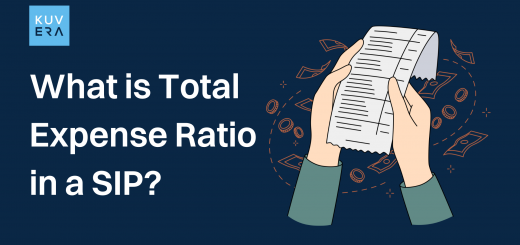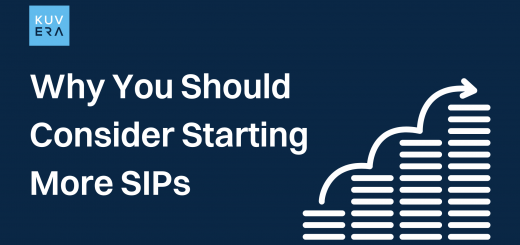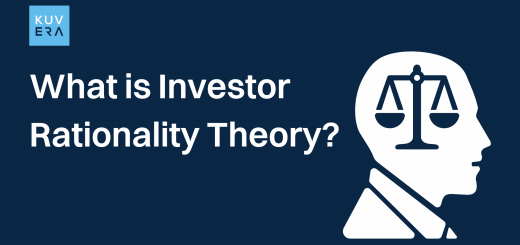Introduction on Tesla:
Tesla Inc. is an American electric vehicle manufacturer based in California. It was established in 2003 by Elon Musk, Ian Wright, Martin Eberhard, Marc Tarpenning, and JB Straubel. The business is based on the idea of “sustainable energy solutions” so that it can make cars that are good for the environment. Additionally, the business sells solar panels and solar roofs to provide renewable energy. The company also sells a Powerwall integrated rechargeable battery system that can store the energy produced by this solar equipment and be used for both domestic and commercial applications. In 2010, the business made its initial public offering (IPO) and was listed on NASDAQ under the ticker TSLA. The manufacturer of electric vehicles reported the third-quarter fiscal year 2021 revenue of $13.8 billion and a net income of $1.62 billion.
In its fleet, Tesla Inc. has a number of electric cars to choose from, including mid-size and full-size sedans, as well as small and mid-size SUVs. The business has also stated that it will introduce a Cyber Truck after 2022. This electric pickup truck will have greater utility than a truck and greater performance than a sports car. The car giant currently serves as the parent to more than 50 companies, many of which are involved in the clean energy and electric vehicle sectors. Maxwell Technologies Inc., Hibar Systems Ltd., Perbix Machine Co., Inc., SolarCity Corp., and Grohmann Engineering GmbH are a few of the well-known businesses in Tesla’s portfolio.
Origins and the Roadster
The goal of founding Tesla Motors was to create an electric sports automobile. Tesla’s chief executive officer (CEO) was Eberhard, and its CFO was Tarpenning (CFO). The company received funding from a number of sources, most notably PayPal cofounder Elon Musk, who gave the new business more than $30 million and served as chairman of the board starting in 2004.
The first car that Tesla Motors sold was the fully electric Roadster, which came out in 2008. In corporate tests, it reached a range of 245 miles (394 km) on a single charge, a record for an electric vehicle in mass production. More testing showed that the Roadster’s performance was about the same as that of many gasoline-powered sports cars. It could go from 0 to 60 mph (96 km/h) in less than four seconds, and it could go as fast as 125 mph (200 km/h). Carbon fibre was used to make the car’s featherweight body. Since the Roadster didn’t have an internal combustion engine, it didn’t have any tailpipe emissions. According to Tesla Motors, the vehicle achieved efficiency ratings that were equivalent to 135 miles per gallon of gasoline (57 km per litre). Lithium-ion cells, which are frequently found in laptop batteries, were used to power the vehicle’s electric engine and could be recharged from a regular electrical outlet. Despite receiving a $7,500 federal tax credit for buying an electric car, the Roadster’s price of $109,000 rendered it a luxury good.
Eberhard joined the organization’s advisory board in late 2007 after leaving his positions as CEO and president of technology. Although he continued to be a shareholder, it was disclosed in 2008 that he had departed the business. Tarpenning, a vice president of electrical engineering who was in charge of overseeing the creation of the software and technical systems for the Roadster, also left the business in 2008. As CEO, Musk took control. The initial public offering of Tesla in 2010 brought in about $226 million.
Tesla under Musk: Model S, Model 3, and Model Y
In order to focus on the new Model S, which was praised by automotive journalists for its performance and design, Tesla ceased manufacturing the Roadster in 2012. It had three distinct battery options, with 235 or 300-mile ranges predicted for each (379 or 483 km). The battery option with the best performance allowed for 0 to 60 mph (96 km/h) acceleration in just under four seconds and a top speed of 130 mph (209 km/h). In the Model S, the battery system was under the floor. The Roadster, on the other hand, was in the back of the car. This arrangement improved handling due to the Model S’s low centre of gravity and was carried over to succeeding Tesla models. Semi-autonomous driving technology known as the Tesla Autopilot became available for the Model S in 2014 (and later on other models).
In order to swiftly and inexpensively charge batteries for Tesla owners, Tesla developed supercharger stations in the US and Europe starting in 2012. Later versions of those stations could even swap out the Model S battery pack in its entirety.
In 2015, Tesla unveiled the Model X, a “crossover” car featuring characteristics often found in sport-utility vehicles but built on a car chassis. The Model X offered seating for up to seven passengers and a maximum battery range of around 340 miles (547 kilometres).
To create batteries and cars, Tesla started constructing massive plants it dubbed Gigafactories. In 2016, a plant of this type opened up south of Reno, Nevada. More Gigafactories are scheduled to open after those in Buffalo, New York, and Shanghai, China.
The Model 3, a four-door sedan with a range of up to 353 miles (568 km) and a price of $35,000, started manufacturing in 2017 in response to demand for a more affordable vehicle. The majority of the controls were located on a 15-inch (38-cm) central touchscreen, and the automobile had an entire glass roof. The Nissan Leaf was surpassed by the Tesla Model 3, which is now both the company’s best-selling vehicle and the most popular electric vehicle ever.
The business also expanded into solar energy-related products. In 2015, a series of solar energy storage batteries for usage in residences and commercial buildings were revealed. In 2016, Tesla bought SolarCity, a company that made solar panels. It now sells rooftop solar panels, a solar roof with energy-producing tiles, and the Powerwall, a large battery that stores electricity for use at night or as a backup in case of a power outage. The company’s name was changed to Tesla, Inc. in 2017 to reflect the fact that it no longer sold only automobiles.
The next year, Musk claimed to have funds and posted a number of tweets about taking Tesla private. His tweets were allegedly “false and misleading,” according to the U.S. Securities and Exchange Commission (SEC), which charged him with securities fraud in September 2018. Later that month, Musk allegedly threatened to quit, and as a result, Tesla’s board turned down an SEC settlement offer. The board quickly agreed to a less favourable settlement, which called for Musk to step down as chairman for at least three years and for Tesla’s lawyers to review his tweets before he sent them. However, the news of the rejected deal sent Tesla’s stock plunging, and Tesla’s stock quickly recovered.
Highlights From Tesla Inc’s Latest Quarterly Results – Third Quarter 2022
Vehicle Capacity
Every single automotive factory generated a record number of automobiles in Q3. Even though it was easier to get parts during the quarter, it became harder to move goods between vehicles during the busiest delivery times. They are increasingly moving toward a regional production and delivery balance that is more equal.
- US: Texas, California and Nevada
Tesla keeps putting new strategies into action to boost Fremont’s output even more. Every month of the quarter saw a rise in the quantity of Texas-made Model Ys produced. During Q3, a total of 4680 cells were generated (cells sent to creation increased three times sequentially). Tesla semi deliveries will start in their initial phase in December 2022.
- China: Shanghai
After experiencing a production slowdown in Q2, Shanghai’s Q3 output rate surpassed previous quarterly records. The facility in Shanghai continues to be the principal export hub, providing automobiles to the majority of countries outside of North America.
- Europe: Berlin- Brandenburg
Tesla in Germany produced more than 2000 Model Y vehicles in a single week with 2170 cells thanks to a significant increase in manufacturing rates toward the end of Q3. The factory’s production rate is progressing in line with forecasts.
Core Technology
- Autopilot and Full Self Driving (FSD)
Tesla hosted the 2nd AI Day in late September when they gave an update on the most recent progress made with FSD, the Dojo training computer, and Optimus Robot. The number of job applications for AI-related positions increased significantly once more as a result of AI Day. About 160,000 Tesla drivers in North America had access to FSD Beta as of the end of Q3.
- Vehicle Software
With Tesla Profiles, which automatically synchronizes seat, mirror, and steering-wheel positions as well as preferences for climate control, navigation, and media, customers are starting to enjoy a smooth transition between vehicles in their account. Tesla also showed off a detailed new view of how energy is used, with suggestions for how each person can use energy more efficiently.
- Battery, Powertrain and Manufacturing
Since the beginning of the year, Tesla’s Gigafactory in Texas has been making Model Y cars using front and back body castings and a structural battery pack. Except for Tesla, no one has ever mass-produced castings of this scale in any industry in our factories in Fremont and Shanghai. Making such big castings (and so eliminating more than 170 separate components) is difficult because all the aluminium must be injected into a die in less than a tenth of a second through a single point of entry without solidifying or distorting. The Gigafactory Berlin-Brandenburg will show off front castings and structural battery packs before the end of the year.
Other Highlights
- Energy Storage
Tesla’s energy storage deployments surged by 62% YoY to 2.1 GWh in Q3, the greatest level ever. This level of growth was achieved despite the fact that the energy sector continues to be more negatively impacted by semiconductor problems than our automated business. Tesla claims that there is still more demand than it can meet for storage items. To meet the rising demand, Tesla is currently ramping up production at the special 40 GWh Megapack factory in Lathrop, California.
- Solar
One of the strongest quarters in recent years, Q3 had a 13% YoY rise in solar developments, reaching 94 MW. While the deployment of the commercial projects was lower YoY and subject to volatility, Tesla’s residential initiatives saw YoY growth in Q3. The crew that installs solar panels keeps enhancing installation effectiveness, allowing for greater volumes and more robust economics.
- Services and Other
A record amount of money was made from services and other sources. Paid supercharging increased by more than 3X from the previous year, and Tesla is working to speed up deployments even more. With the aid of sales of old cars and other parts, services and other gross profit also hit a record high in the third quarter. To more effectively control the flow of vehicles across the network, Tesla is expanding the range of supercharging prices from fixed to variable.
Outlook
- Volume
Tesla intends to increase production as rapidly as possible. They anticipate a 50% average yearly growth in car deliveries over a multi-year time frame. How quickly the economy grows will depend on how much the equipment can do, how well it works, how well it works, how much it can do and how stable it is.
- Product
The speed of production ramps in Texas and Berlin Brandenburg will be affected by the ongoing supply chain problems as well as the effective adoption of numerous new products and manufacturing technologies in new locations. The Gigafactory Berlin-Brandenburg will take time to ramp up, just like any other factory. The industrialization of Cybertruck, which is currently scheduled for Texas production after the Model Y ramp, is moving forward thanks to Tesla. Tesla Semi deliveries are expected to start in the first wave in December 2022.
Financial Summary
- Revenue
Total revenue grew 56% YoY in Q3 to $21.5B, revenue was impacted by the following items:
- + growth in vehicle deliveries
- + increased ASP YoY; ASP declined sequentially as the prior quarter’s ASP was driven by limited Shanghai production in Q2
- + growth in other parts of the business
- – negative FX impact
- Profitability
The operating income improved YoY to $3.7B in Q3, resulting in a 17.2% operating margin. YoY, operating income was primarily impacted by the following items:
- +increased ASP
- +growth in vehicle deliveries
- + profit growth in other parts of the business
- – higher raw material, commodity, logistics, warranty and expedite costs
- -negative FX impact of ~$250M
- -the cost of production ramp at Gigafactory Texas and Berlin Brandenburg and ramp of 4680 cells (material margin impact, smaller profit impact)
- Cash
Quarter-end cash, cash equivalents and short-term marketable securities increased sequentially by $2.2B to $21.1B in Q3, driven mainly by the free cash flow of $3.3B, partially offset by debt repayments of $0.9B
Frequently Asked Questions (FAQs) On Tesla Inc
-
What is Tesla Inc – Tesla share price?
Tesla Inc’s – Tesla share price is USD 224.64 as of 27th October 2022.
-
What are the 52-week highs and lows of Tesla Share Price?
As a technical indicator, the 52-week high/low is the highest and lowest price at which a Tesla Inc stock has traded over the specified time period. As of 08 Nov ’22, the 52-week high and low for Tesla share price were 414.50 and 196.66 respectively.
-
What is the market cap of Tesla Share Price?
The market cap of Tesla Share Price is 61.75TCr as of 08th November 2022.
Interested in how we think about the markets?
Read more: Zen And The Art Of Investing
Check out all our “Investor Education Originals” videos on Youtube and get smart about investing.
Start investing through a platform that brings goal planning and investing to your fingertips. Visit kuvera.in to discover Direct Plans and Fixed Deposits and start investing today.
#MutualFundSahiHai #KuveraSabseSahiHai #PersonalFinance #InvestorEducation;











